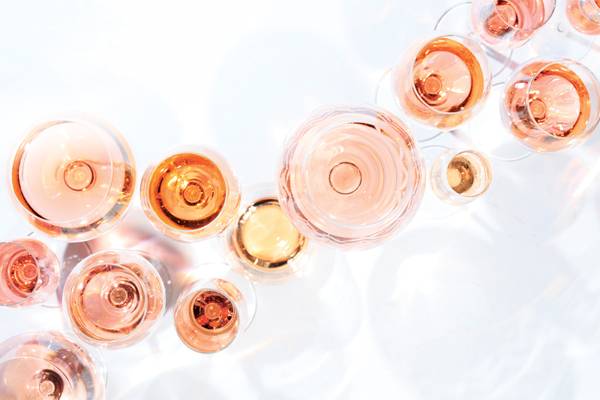The “Mad Men” generation had three-martini lunches, and millennials are showing a strong taste for wine. In fact, they’re on the verge of toppling baby boomers as the most grape-loving group, according to the Wine Market Council. Its latest report showed the younger set is consuming more wine overall and gaining in terms of volume per sitting.
Jason Smith, executive director of wine for MGM Resorts, said that while there was no specific data on what or how much millennials are drinking when they visit Las Vegas, “what we do know is, they’re drinking lots of wine.”
The Wine Market Council also found that millennials don’t play favorites and are willing to try just about any wine regardless of the region it came from or the stereotypes surrounding it. High-frequency millennial drinkers are open to bottles from Chile, Greece, South Africa and other places with emerging viticultural reputations. They see products from lesser-known havens like Cahors, France, as more authentic, said Joe Phillips, director of wine education and trade development at Southern Glazer’s Wine & Spirits.
Phillips said choosing a good bottle can be an intimidating prospect with so many varieties on the market, but by talking to your friends or a local sommelier, you’ll gain the confidence to experiment. “We’re seeing the progress that comes with such high quality and diverse products,” Phillips said of the millennial effect on the wine business. “Now’s a great time to be 21.”
Who counts as a millennial?
Millennials are the largest generation in American history, according to Goldman Sachs data, and by 2020, more than a third of American adults will be millennials, according to a Brookings Institute report. The Pew Research Center says there are 75.4 million American millennials, compared with 74.9 million American baby boomers and an estimated 65 million Gen Xers.
There’s no exact date range for the millennial generation, but the Pew Research Center says it encompasses any person born after 1980 who came to age in the new millennium. Other organizations such as the New York Times report that millennials are born after 1980 but before 2000. Some even divide millennials into two groups: Young Millennials (those in their early 20s) and Old Millennials (those now entering their 30s). Some suggest the cutoff date should be 1995, and a new generation called the iGen or Generation Z would emerge.
• Millennials are less likely to buy wine from California, historically the most popular region among American consumers.
• Millennials are “open to new experiences, new regions and new grape varieties,” Smith said. “When you’re young, you like to try new things.”
Millennials think pink
Somewhere along the line, rosé evolved from basic to basic necessity for millennials. It isn’t summer without an Instagram picture of a glass by the pool captioned eloquently with #roséallday or #yeswayrosé. Consumption of the sparkling pink wine is increasing steadily. Exports from Provence, France, a key source of rosé for the U.S. market, have been in the double digits for more than a decade. And France and the U.S. account for more than half of all annual consumption of rosé. “Rosé wasn’t big in Las Vegas, but that’s changed,” Smith said. “I think they like it because it’s festive and fun and not overly serious.”
An app for new wine drinkers
Ever wonder which wine to drink with your spider roll, chimichangas or green curry? Hello Vino has you covered. The free app also lets you scan bottles for info (helpful at restaurants), keep track of favorites, find wines that match your preferences and order them. For food pairings, all you need to do is click on the image of what you’re about to eat, like a slice of cheese pizza, and it’ll give you a list of options based on other reviewers and your personal tastes.
Keeping wine fresh
Wine’s No. 1 frenemy is oxygen. That’s because bacteria is naturally present in the liquid, and it needs oxygen to grow. Once wine and oxygen connect, the bacteria become active. Initially, that’s a good thing — it’s known as the wine “opening up,” which improves its flavor and aroma. However, the longer the wine is exposed to oxygen, the more the bacteria consume the sugar and alcohol. That’s bad, because in the process the microorganisms turn those materials into acetic acid, the main compound in vinegar, which gives the wine an unpleasant or downright bitter taste. The chemicals and bacteria in the wine depend on the composition of the soil used to grow the grapes. While most wines contain similar elements, the ratio of them to each other results in the different tastes.
• Tip 1: Pour the wine into a smaller container, which reduces the amount of oxygen it’s exposed to.
• Tip 2: Put the wine in the fridge. The low temperature will slow down the degradation caused by oxygen.
Sipping in the Southwest
Sanders Family Winery: Just a 45-minute drive from the Strip, the Sanders winery is a quick getaway in Pahrump. Founded in 1988, it offers free tastings from 10 a.m. to 5 p.m. Monday to Saturday and 11 a.m. to 5 p.m. on Sundays. 775-727-1776, sanderswinery.com
Pahrump Valley Winery: This winery about an hour from Las Vegas is slated to hold a grape-stomping competition on Oct. 7-8. The competition includes two people per team, and winners will be determined based on the amount of juice they produce. 775-751-7800, pahrumpwinery.com
Page Springs Cellars: The family-owned vineyard about four hours from Las Vegas offers tastings, winery and vineyard tours as well as yoga and hoop-dancing classes. It also hosts the Titled Earth Festival, scheduled for June 22-23. Cornville, Ariz.; 928-639-3004, pagespringscellars.com


Join the Discussion:
Check this out for a full explanation of our conversion to the LiveFyre commenting system and instructions on how to sign up for an account.
Full comments policy